Helping the River Dee thrive: How NRW is making a difference
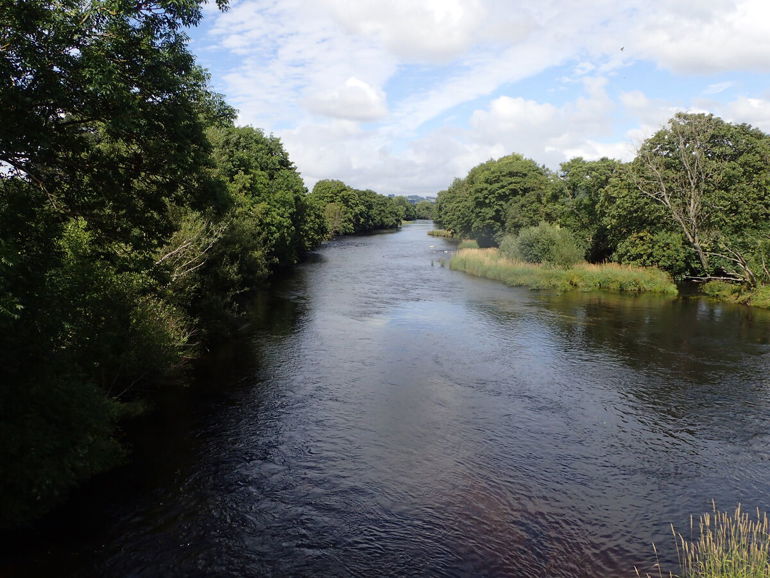
The River Dee winds through some of the most beautiful parts of North Wales. But it’s much more than a scenic spot. It’s a vital source of drinking water, a home for wildlife, and a place for people to enjoy the outdoors.
At Natural Resources Wales (NRW), we work hard to keep the River Dee, a Special Area of Conservation (SAC) and a Site of Special Scientific Interest (SSSI), flowing in the right way – for people, for wildlife, and for the environment. One of our most important jobs is managing something called the Dee Regulation Scheme.
What is the Dee Regulation Scheme?
The scheme is all about controlling how much water flows down the river. This is achieved by storing water in three nearby reservoirs – Llyn Celyn, Llyn Brenig and Llyn Tegid – and carefully releasing it when needed.
Management of the scheme is overseen by a Consultative Committee, made up of representatives from NRW, Environment Agency, the Canal & Rivers Trust, and four water companies.
This water supports more than 2.5 million people by ensuring there's enough for public water supply. It also plays a big role in reducing the risk of flooding, especially after heavy rainfall.
And that’s not all. These lakes and rivers support renewable energy, tourism, recreation, and the local economy – all while supporting a diverse range of wildlife and habitats.
Bala Sluices – Small structure, big impact
A key part of the regulation scheme is the Bala Sluices. These gates help manage how much water is stored in Llyn Tegid and how much flows downstream.
They’re essential in dry spells to make sure there's enough water further down the river. And during wet weather, they can hold back floodwater, helping to protect nearby towns and villages as well as communities further downstream along the River Dee.
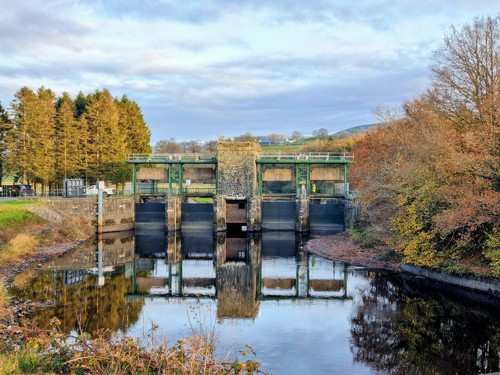
But the sluices, associated weirs, and reservoir release patterns from Llyn Celyn, can also affect how fish, like salmon, move up and down the river. That’s why we’ve been looking closely at how to manage them in a way that works for both people and wildlife.
Salmon in trouble
The River Dee is known for its Atlantic salmon. But in recent years, the number of young salmon (called smolts) and adults has dropped.
This isn’t just happening here – it’s part of a bigger pattern seen in rivers across the UK and beyond. Still, we wanted to understand what was happening in our part of the world – and what we could do about it.
Working together for the river
Back in 2014, we set up the Upper Dee Steering Group to dig into this issue. This group includes NRW experts and partners like the Welsh Dee Trust, Dŵr Cymru Welsh Water, Canoe Wales, and Eryri National Park.
Together, we’ve been monitoring the river, collecting data, and testing different approaches. So far, we’ve invested over half a million pounds in this work – and that doesn’t even count staff time. Another £1.2 million has been spent on improving salmon habitats.
Tagging and tracking fish
Since 2015, we’ve been tagging young salmon and tracking their journey from the upper Dee tributaries and through the sluices. This helps us see if structures like the Bala Sluices or changes in water flow are affecting their chances of survival.
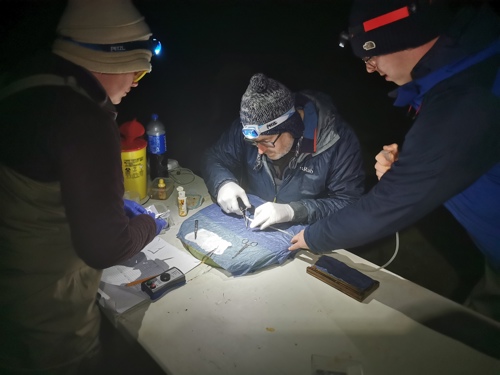
We now have eight years of valuable data, which is being analysed by experts. The results will guide our next steps from 2025 onwards.
High-tech tools under water
To better understand how adult salmon move through the river, we’ve used underwater sonar cameras near the Bala Sluices. These special cameras work even in murky water and at night.
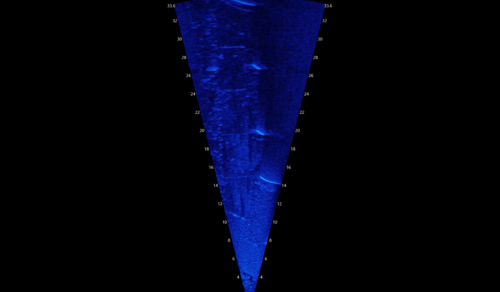
They showed us that while the fish could pass through, some struggled during low flows. That helped us come up with a better way to manage the sluices.
Changing how we operate the sluices
We used to open and close all four main sluice gates together. But our sonar studies showed that this created narrow gaps, which made it harder for salmon to swim through.
Now, during low flows, we use just two of the main gates. This means bigger gaps for fish to pass through. We also lift the fish gates out of the water completely for as long as possible during the smolt season to give the young fish a clearer path.
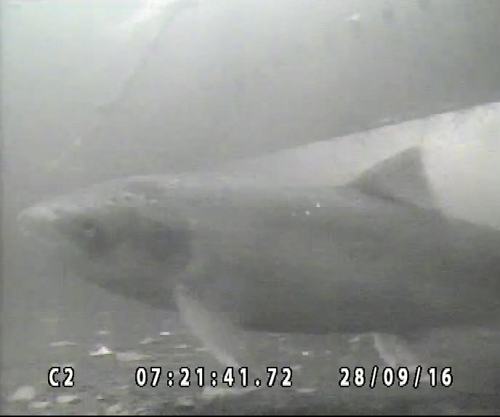
These small changes have already made a big difference for migrating salmon, almost doubling the chance of adult salmon finding the fish lock on low flows.
Smarter control systems
To make these improvements easier, we updated the Bala Sluice control system. It now allows us to operate two gates at a time, remotely and more precisely. This saves time, cuts costs, and helps us respond faster to changing conditions.
Adapting to the weather
We’ve also changed how we release water from Llyn Tegid. In the summer, we try to mimic natural river conditions by responding to small rainfall events upstream of Llyn Tegid. If we spot a rise in the river upstream, we now release a bit more water downstream to help salmon on their journey.
In drier times, we can also use stored water in Llyn Tegid and Llyn Celyn to give the river a temporary boost. This creates better conditions for fish during key migration periods.
Extra winter flows
From November to April, at our request, Dŵr Cymru Welsh Water release more water than required from Llyn Celyn to protect salmon eggs (known as redds) that are at risk of being exposed due to the artificial flow regime, and that are laid in gravel beds downstream in the Afon Tryweryn. This extra water helps keep the eggs covered and oxygenated, improving their chances of survival.
Improving fish habitats
It’s not just about how we manage the water. We’ve also supported physical improvements to river habitats. One example is the Afon Hesgyn, a tributary of the Afon Tryweryn. In the past, water was taken from it over winter to help refill Llyn Celyn, which created problems for fish downstream.
Working with Dŵr Cymru Welsh Water, we’ve improved fish passage, added flow downstream, and changed the system so water is only taken when absolutely necessary.
What’s next?
We’ve come a long way in understanding how to manage the River Dee better for everyone who relies on it – from people to salmon.
We’ll continue analysing the data we’ve collected over the past decade. And we’ll keep working with our partners to make sure NRW’s assets, like the Bala Sluices, are helping – not harming – the river’s health.
The River Dee is a precious resource. Through careful management, science, and strong partnerships, NRW is doing all it can to help it thrive for generations to come.
